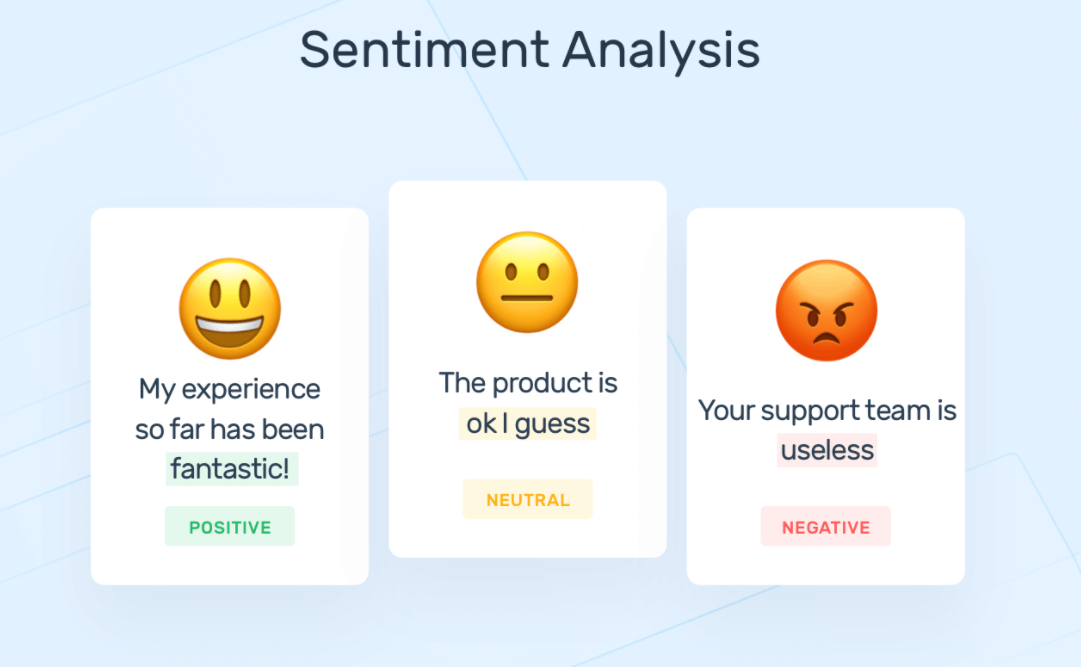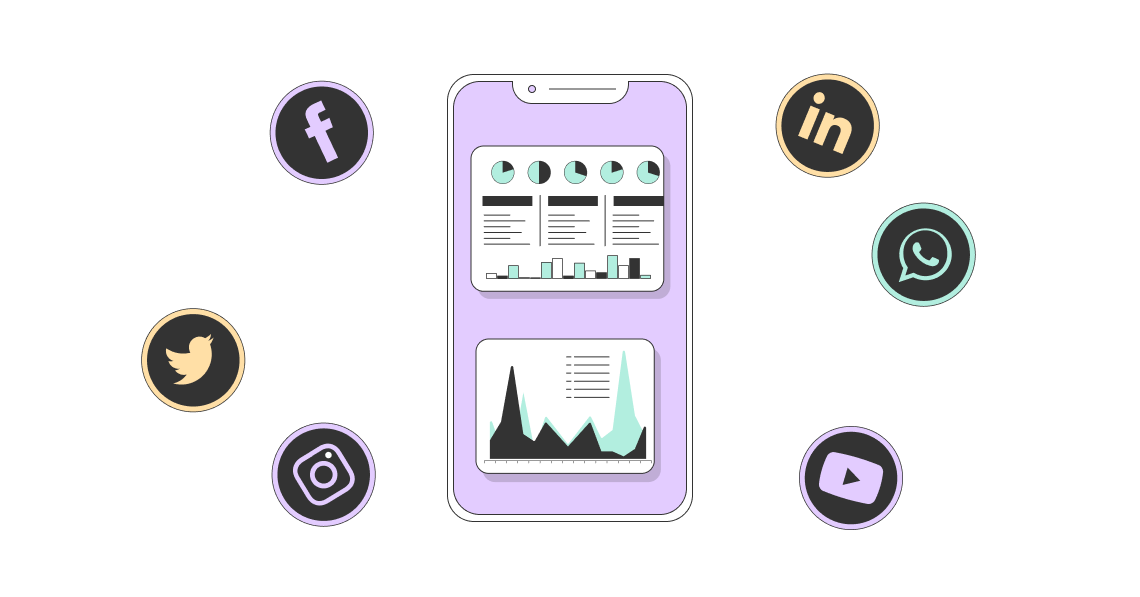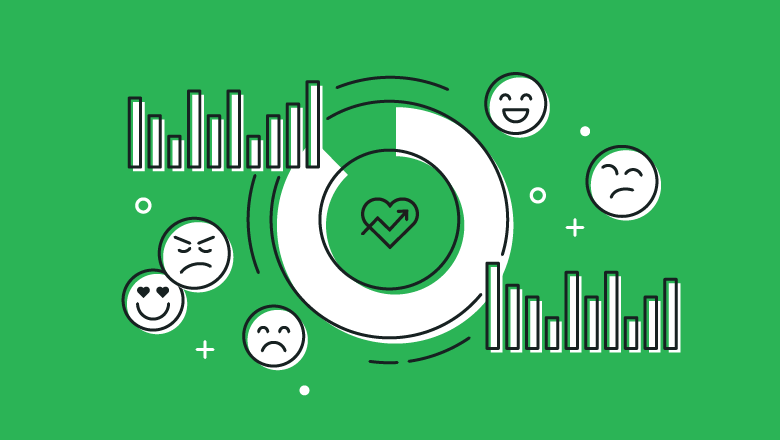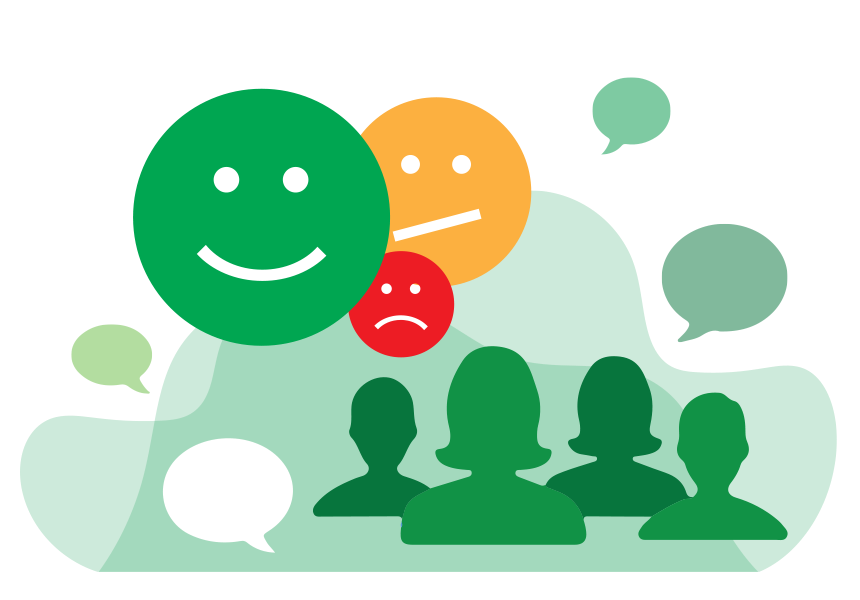In today’s digital age, businesses need to stay connected with their target audience. Understanding customer opinions and feedback has become crucial for effective decision-making and enhancing brand reputation. This is where social listening and sentiment analysis come into play. In this article, we will explore the concept of social listening and sentiment analysis, their importance, and how they can benefit businesses.
What is Social Listening And Sentiment Analysis?
Social listening refers to the process of monitoring and analyzing conversations and mentions about a brand, product, or topic on various social media platforms. It involves tracking mentions, comments, reviews, and hashtags related to the business to gain insights into customer sentiments and opinions. Social listening helps businesses understand what their customers are saying, identify trends, and discover opportunities for improvement.
Importance of Social Listening
Social listening is essential for businesses as it provides valuable information about customer perceptions and preferences. By actively listening to customer conversations, businesses can:
- Gain customer insights: Social listening allows businesses to understand customer needs, expectations, and pain points. Also, by identifying recurring themes in customer discussions, companies can align their strategies to meet customer expectations effectively.
- Enhance brand reputation: By monitoring social media conversations, businesses can identify and address any negative sentiments or issues promptly. This proactive approach helps in maintaining a positive brand image and building trust with customers.
- Identify industry trends: Social listening helps businesses stay up-to-date with the latest trends, topics, and industry influencers. Also, by analyzing industry conversations, businesses can identify emerging trends, anticipate customer demands, and stay ahead of competitors.
Understanding Sentiment Analysis

Sentiment analysis, also known as opinion mining, is a technique used to determine the sentiment or attitude expressed in a piece of text. It involves analyzing the language, tone, and context of social media posts, customer reviews, and other textual data to classify them as positive, negative, or neutral. Sentiment analysis helps businesses gauge customer satisfaction, measure brand sentiment, and make data-driven decisions.
How Does Sentiment Analysis Work?
Sentiment analysis relies on natural language processing (NLP) algorithms and machine learning techniques to understand and classify text-based data. It involves the following steps:
- Data collection: Relevant data from social media platforms, review websites, and other sources are gathered.
- Preprocessing: The collected data is cleaned by removing noise, irrelevant information, and formatting inconsistencies.
- Text analysis: The text is analyzed using NLP techniques to extract features, such as keywords, phrases, and sentiments.
- Sentiment classification: Machine learning models are trained on labeled data to classify the text into positive, negative, or neutral sentiment categories.
Benefits of Social Listening and Sentiment Analysis
Implementing social listening and sentiment analysis in business strategies can yield several benefits, including:
- Improved customer satisfaction: Businesses can enhance customer satisfaction and loyalty by understanding customer sentiments and addressing their concerns promptly.
- Competitive advantage: Social listening helps businesses monitor competitor activities and identify gaps in the market. This information can be leveraged to develop unique value propositions and outperform competitors.
- Crisis management: By detecting negative sentiments and potential crises early on, businesses can immediately mitigate damage and maintain a positive brand reputation.
- Product development and innovation: Analyzing customer feedback and preferences can provide valuable insights for product improvement and innovation.
- Influencer identification: Social listening enables businesses to identify and collaborate with influential individuals who can promote their brand and reach a wider audience.
Tools and Technologies for Social Listening and Sentiment Analysis

Several tools and technologies are available to facilitate social listening and sentiment analysis. These include:
- Social media monitoring platforms: Tools like Brandwatch, AIM Insights, and Sprout Social help businesses track mentions, hashtags, and conversations across multiple social media platforms.
- Sentiment analysis APIs: Services like Google Cloud Natural Language API, IBM Watson Natural Language Understanding, and Azure Text Analytics provide sentiment analysis capabilities through pre-trained models.
- Text mining and analytics software: Tools like RapidMiner, KNIME, and Python’s NLTK library offer advanced text processing and sentiment analysis functionalities.
Best Practices for Social Listening and Sentiment Analysis
To make the most of social listening and sentiment analysis, businesses should consider the following best practices:
- Clearly define goals and objectives: Establish specific goals for social listening and sentiment analysis, such as improving customer satisfaction or monitoring brand reputation.
- Select relevant data sources: Identify the social media platforms, review websites and other sources that are most relevant to your business and target audience.
- Use a combination of automated and manual analysis: While automated sentiment analysis tools can provide valuable insights, manual analysis is essential for understanding context and sarcasm accurately.
- Monitor competitor activities: Keep an eye on competitor mentions and conversations to identify their strategies and learn from their successes and failures.
- Regularly review and update strategies: Social listening and sentiment analysis are dynamic processes. Also, regularly review and update your strategies to adapt to evolving customer expectations and industry trends.
Challenges in Social Listening and Sentiment Analysis
Although social listening and sentiment analysis offer numerous benefits, they come with certain challenges, such as:
- Noisy data: Social media platforms generate vast amounts of unstructured and noisy data, making it challenging to filter and extract relevant information accurately.
- Contextual understanding: Sentiment analysis algorithms struggle to grasp the subtleties of language, humor, and sarcasm, often leading to the misclassification of sentiment.
- Multilingual analysis: Analyzing sentiments across multiple languages adds complexity due to linguistic variations and cultural nuances.
- Privacy and ethical concerns: Collecting and analyzing user-generated content raise privacy concerns, and businesses must adhere to ethical data usage practices.
Case Studies with Record-Breaking Results
To showcase the real-world impact of social listening and sentiment analysis, let’s explore some case studies where businesses leveraged these strategies to achieve remarkable success.
1. Nike’s Real-Time Engagement Boosts Brand Loyalty
Nike utilized social listening to track customer conversations around its products and campaigns. By analyzing real-time data, they identified trending topics and customer concerns, allowing them to engage promptly and effectively. One notable success was their response to a viral hashtag campaign where they acknowledged and addressed customer feedback within minutes. As a result, Nike saw a 35% increase in positive sentiment and a 20% boost in customer engagement on social media.
2. Coca-Cola’s Sentiment-Driven Product Innovation
Coca-Cola used sentiment analysis to understand customer reactions to new flavors and limited-edition releases. Through analyzing millions of social media posts and reviews, they discovered an increasing demand for nostalgic flavors. This insight led to the revival of Cherry Vanilla Coke, which generated a 30% sales increase in its first quarter post-launch.
3. Netflix’s AI-Powered Sentiment Analysis for Content Recommendation
Netflix implemented sentiment analysis to improve its recommendation engine. By analyzing viewer reviews and social media mentions, they identified common themes and emotions associated with their shows. This helped them personalize content suggestions, leading to a 25% increase in user watch time and improved customer retention.
4. McDonald’s Crisis Management Through Social Listening
When McDonald’s faced backlash over a controversial advertisement, their social listening team quickly detected the negative sentiment spike. By responding transparently and launching a corrective campaign that addressed customer concerns, they managed to restore brand trust within a week, reducing negative sentiment by 40% and increasing customer satisfaction scores.
Influencer Quotes & Viral Tweets
To further highlight the importance of social listening, here are some impactful quotes and tweets from industry influencers:
📢 Gary Vaynerchuk (@garyvee):
“If you’re not listening to your customers on social media, you’re already behind. Social listening isn’t a tool, it’s a mindset.”📢 Neil Patel (@neilpatel):
“Brands that understand customer sentiment win. Listen, engage, and adapt. That’s the formula for success.”📢 Rand Fishkin (@randfish):
“Data-driven marketing isn’t just about numbers; it’s about understanding emotions. Sentiment analysis helps brands connect on a human level.”📢 Elon Musk (@elonmusk):
“Great companies are built by listening to what people want and adapting. That’s why Tesla pays close attention to what customers say online.”📢 HubSpot (@HubSpot):
“Your audience is talking. The question is—are you listening? Social listening gives brands a competitive edge by uncovering real-time customer insights.”
By integrating social listening and sentiment analysis into business strategies, companies can make data-driven decisions, improve customer engagement, and stay ahead in an ever-evolving market.
The Future of Social Listening and Sentiment Analysis

As technology advances, social listening and sentiment analysis are expected to evolve further. Some potential future trends include:
- Emotion detection: Sentiment analysis may become more nuanced by detecting specific emotions, such as happiness, anger, or sadness, from the text.
- Image and video analysis: With the rise of visual content, sentiment analysis may extend to images and videos, enabling businesses to understand customer sentiments expressed through non-textual formats.
- Real-time analysis: Faster processing capabilities will enable real-time sentiment analysis, allowing businesses to respond to customer feedback and sentiments promptly.
- Voice and speech analysis: Sentiment analysis may expand to analyze spoken language and emotions conveyed through voice, enabling businesses to gather insights from the audio content.
Conclusion
In conclusion, social listening and sentiment analysis are crucial for businesses seeking to thrive in today’s competitive landscape. By harnessing the power of customer conversations and analyzing textual data, companies can unlock valuable insights, enhance customer satisfaction, and maintain a strong brand reputation. To experience the transformative benefits of social listening and sentiment analysis firsthand, we invite you to request a demo from AIM Technologies. Discover how our cutting-edge solutions can propel your business forward and ensure you stay ahead of the curve.
FAQs
Q1: What is the difference between social listening and social monitoring?
- Social listening involves analyzing and understanding customer sentiments and opinions, while social monitoring focuses on tracking and observing mentions and conversations without deep analysis of sentiment.
Q2: Can sentiment analysis accurately detect sarcasm?
- Sentiment analysis algorithms often struggle with sarcasm as it relies heavily on context and understanding subtle language cues. Accurate detection of sarcasm remains a challenge.
Q3: How frequently should businesses conduct social listening and sentiment analysis?
- Regular monitoring and analysis are recommended to keep up with changing customer sentiments and market trends. The frequency can vary depending on business objectives and industry dynamics.
Q4: Are there any ethical considerations when collecting and analyzing user-generated content?
- Yes, businesses must ensure they comply with privacy regulations and obtain proper consent for data collection. Ethical data usage practices involve safeguarding user privacy and anonymizing personal information.




